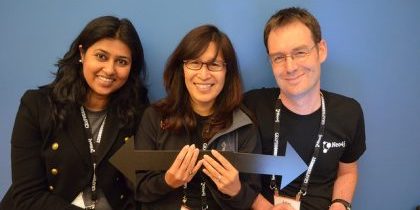Neo4j Community Mavens: Because Being a Supernode Isn’t Always a Bad Thing

Neo4j Program Manager, Community Development & Enablement
3 min read

 The Neo4j community is full of different kinds of people: people who help others with technical questions, those who write blogs to help educate others about graph databases, those who contribute to open source projects and more.
The Neo4j community is full of different kinds of people: people who help others with technical questions, those who write blogs to help educate others about graph databases, those who contribute to open source projects and more.
Our community also has those special individuals who yearn to connect to their community by sharing knowledge and ideas, learning from others, and paving the way for a graph-thinking epidemic.
Their enthusiasm is infectious and they are energized by connecting others within their community. They are motivated by gaining knowledge and have a constant desire to know more. A big differentiating factor of these people and others that may just absorb knowledge is that they love to share their knowledge with others and always want to find ways to help.
In turn, those connection lovin’ individuals are seen by the community as thought leaders and connectors. They are the ones that spin the gears to make community engagement happen.
We’re looking for those community-driven supernodes.
Introducing the Neo4j Community Maven Program
We recently created a program to support those people, the Neo4j Community Maven program.
Wait, what’s a maven? If you’ve ever had the opportunity to read Malcolm Gladwell’s book The Tipping Point, you may already be familiar with the term “maven.”
In Gladwell’s model, mavens are one of the three causes of epidemics (or the three “agents of change”). Mavens are “information specialists,” or “people we rely upon to connect us with new information.” They accumulate knowledge, especially about the marketplace and know how to share it with others.
“A maven is someone who wants to solve other people’s problems, generally by solving his [or her] own.”
According to Gladwell, mavens start “word-of-mouth epidemics” due to their knowledge, social skills and ability to communicate.
What Being a Maven Entails…
So, what do we expect from our Neo4j Community Mavens?
Well, for one, good intentions – we want them to want to connect and help people in the graph technology community. And two, for them to be the go-to node in their local (geographic) community. We plan to help support them in their growth of being informational resource in their local community.
With this program, we hope to encourage and support more individuals to take an active role in engaging with their local Neo4j community by bringing people together, sharing information and advocating for the graph-thinking paradigm.
…and What Mavens Get in Return
Great things happen when you grow and guide a community you believe in. At the very minimum, it leads to personal and professional growth, enrichment, learning and friendships! Aside from the studies showing being involved in community is good for the mind and body, it also offers you the opportunity to learn from others and grow professionally.
When you’re leading a community, people begin to recognize you as a community thought-leader, which has potential to bring new professional opportunities. It also just feels really good to develop strong connections with like-minded people and accomplish the creation of something awesome around your passions.
The best part is, you’re not doing it alone… you’re joining something much bigger. There are other Neo4j Community Mavens all over the world to connect with! This program positions you as the pivotal node (a la betweenness centrality graph algorithm) between communities across the world.
Become a Neo4j Community Maven
Interested in being that pivotal supernode (the good kind) in your city or region?
I encourage you to learn more about the Neo4j Community Maven program and if you’re interested, go ahead and apply here.
Have other ideas on how you want to be involved? Shoot me an email, I’d love to hear from you! karin@neo4j.com.
Cheers,
Take our online training class, Neo4j in Production, and learn how to deploy the #1 platform for connected data like a pro.






